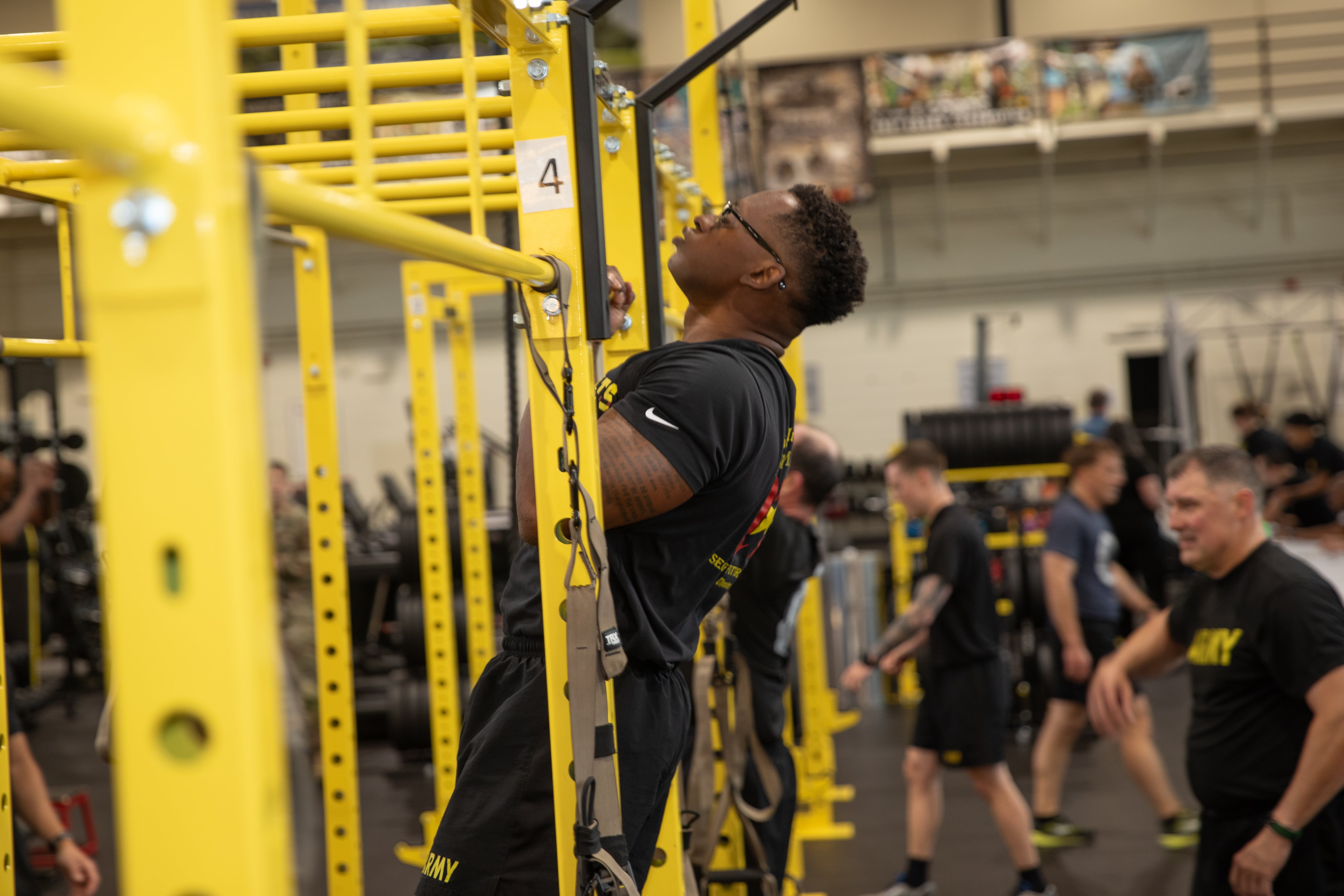The Army recently announced that its all-around health and fitness program will now expand beyond a select 111 brigades to the entire Army.
Since its inception in 2018 with a pilot program, the Holistic Health and Fitness program, or H2F, has sought to educate and improve soldier performance in physical, mental, nutrition, spiritual and sleep domains.
To that end, the force has built brigade-level civilian teams of nearly two dozen contracted staff members, which include an H2F program director; nutrition, injury control and mental health directors; registered dietitians; physical therapists; athletic trainers; strength coaches; cognitive performance specialists and occupational therapists.
RELATED
The brigades also receive fitness gear such as kettlebells, stationary bikes and various other equipment.
The Army’s original goal was to resource its 110 close combat brigades by 2030. With H2F rolling out across the entire service, Army Times spoke with officials at Training and Doctrine Command’s Center for Initial Military Training, which oversees the program, about where the service is now.
Here’s a look at the numbers.
Fifty active duty brigades now have H2F Performance Teams. This includes a mix of combat units, such as infantry, armor and Stryker brigades, and support units, such as military police, medical, engineer, training and sustainment brigades.
The service expects to have performance teams fully fielded to the original 111 selected brigades, or 47% of the Army’s total brigades, by fiscal 2027.
The remaining 53% of the Army’s brigades will begin seeing performance teams starting in fiscal 2028. The goal is to complete all team fielding by fiscal 2032, officials said.
“The general model will have an H2F Area Support Team that would be responsible for several units on an installation that do not already have an H2F Performance Team,” said Dr. Kevin Bigelman, H2F deputy director.

The Army Reserve will begin seeing performance teams at their units in fiscal 2026. All 28 Army Reserve commands and divisions will have the teams by fiscal 2030.
At the same time, the Army is developing an H2F Soldier Performance Management System, or H2FMS, to help soldiers and leaders measure, assess and improve their individual and unit fitness, performance and health, Bigelman said.
Funding for the team fielding to the first 111 brigades has already been factored into the fiscal 2026 to 2030 budget plans, officials said.
An H2F Performance Team costs an estimated $3 million to field and $2.5 million to maintain annually, officials said. A team for an Army National Guard or Reserve unit costs about $1.3 million to field and $1 million to maintain.
“The initial return on investment shows H2F will pay for itself as it decreases musculoskeletal injuries, reduces nondeployables, and helps soldiers who do get injured return to duty faster,” Bigelman said.
Initial data comparing H2F-resourced brigades to nonresourced brigades shows:
- Though musculoskeletal injuries (MKSI) have increased across the Army, brigades with H2F Performance Teams have a 14% lower increase in MSKI and 30% lower increase in MSKI longer than 90 days.
- 23% greater Army Combat Fitness Test pass rate.
- 27% more soldiers qualifying as expert in rifle marksmanship.
- 22% lower increase in behavioral health reports.
- 502% lower increase in substance abuse profiles.
Source: Center for Initial Military Training
The Army isn’t relying solely on civilian experts to advise its teams. Senior leaders want soldiers at the head of physical training but also to have a working knowledge of the other H2F domains.
In October 2023, the Army changed its Master Fitness Trainer Course to the H2F Integrator Course and renamed its Physical Fitness School the H2F Academy.
The program of instruction for students includes:
- Develop training programs to optimize performance potential and mitigate injury risk.
- Coach and improve movement patterns.
- Fuel for performance in daily life and for physically demanding tasks.
- Practice stress management techniques.
- Learn to search for, and connect with, a greater purpose.
- Apply rest, recovery and sleep foundations to compliment training programs.
Source: Center for Initial Military Training
The Academy has graduated 754 H2F integrators in the past year, officials said.
But to expand the reach, the Army has also conducted satellite training in H2F for Guard and Reserve participants. That’s resulted in another 611 H2F integrators, for a total of 1,365 integrators now in the Army.
Todd South has written about crime, courts, government and the military for multiple publications since 2004 and was named a 2014 Pulitzer finalist for a co-written project on witness intimidation. Todd is a Marine veteran of the Iraq War.
Read the full article here
